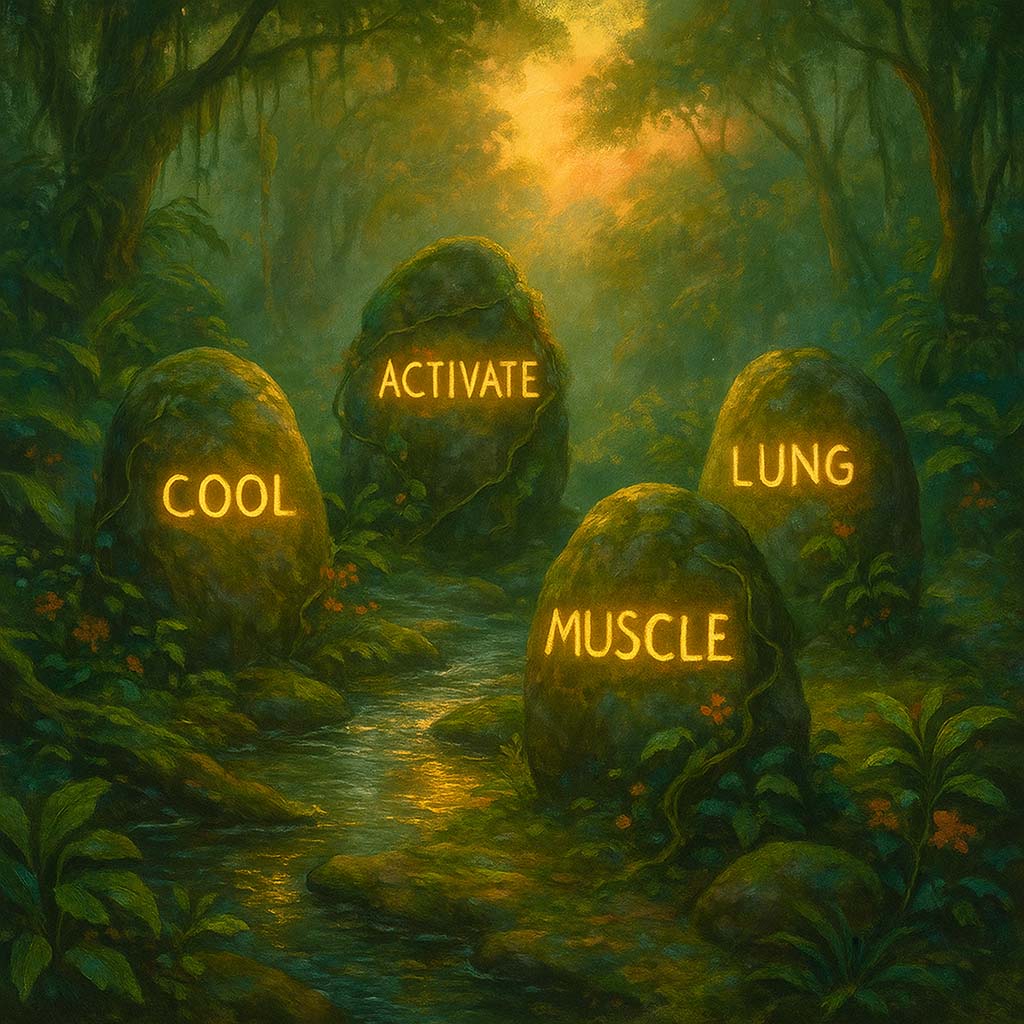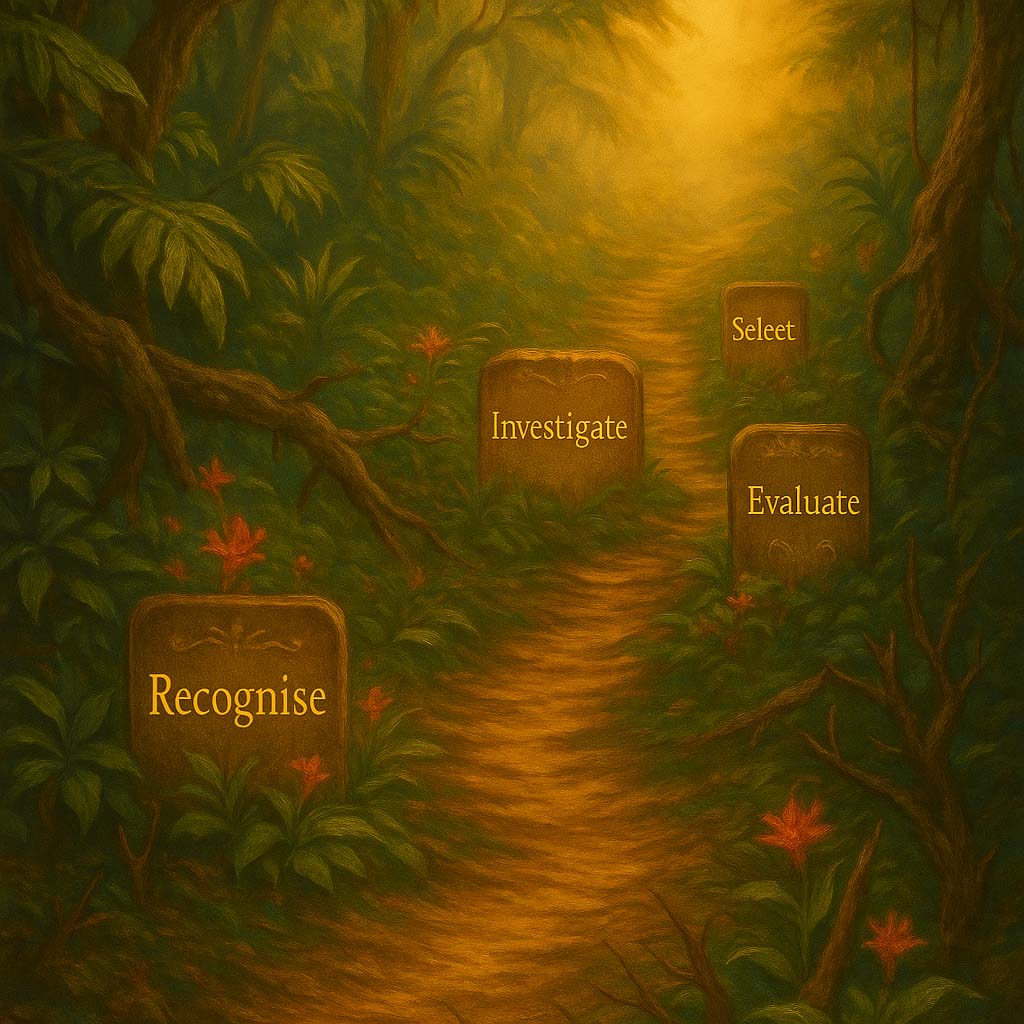
 Instil
Instil
Instil Calm. Rise Strong.
The Wildfire Mind: Understanding ADHD Overwhelm
The ADHD mind is fast, vibrant, creative — like a brilliant multicoloured pen, but with all the colours trying to flow out at once, jamming the page with chaotic, beautiful, overwhelming energy.
Or imagine a Ferrari engine — powerful, high-revving, capable of incredible things — but with the brakes of a bicycle. It’s not the energy that’s the problem. It’s the ability to slow down, steer, and stay grounded when emotions, ideas, and impulses surge all at once.

But with strong roots, fertile ground, and gentle rains, the forest stays alive, even through fire and storm.
In ADHD, strengthening emotional regulation is like nurturing deep roots beneath vibrant skies.


 The Biological Roots
The Biological Roots
ADHD isn't just about attention — it's deeply tied to how the brain handles emotional and sensory input.
- The prefrontal cortex (responsible for brakes, planning, impulse control) develops differently in ADHD.
- The limbic system (emotional brain) can surge powerfully without the regulatory circuits catching up.
- Dopamine dysregulation makes it harder to experience steady emotional flow — emotions often feel either too muted or too intense.
This is why emotional surges in ADHD feel so big — and why learning to calm, ground, and guide the mind is life-changing.

 Distress Tolerance
Distress Tolerance CALM
CALM
Building Distress Tolerance in ADHD
Distress tolerance is the ability to ride out emotional storms without making the situation worse.
It’s about surviving the tough moments — not by pretending the pain isn’t there, but by learning how to ground yourself, soothe your body, and find your anchor.
In ADHD, where emotions can flare quickly and impulsivity can lead to regret, distress tolerance is the first step toward a richer, more resilient life.


 Body Temp
Body Temp C — Cool
C — Cool
Lower Your Body Temperature
When emotions surge, your body heats up — heart racing, cheeks flushing, muscles tensing.
Cooling the body sends a powerful biological signal of safety to the brain.
Practice:
- Splash cold water on your face.
- Hold an ice cube in your hand.
- Step into a cooler environment.


 Movement
Movement A — Activate
A — Activate
Move Your Body, Release the Storm
Energy trapped inside needs release.
Activation uses movement to burn off the adrenaline and cortisol flooding your system.
Practice:
- Jump in place, shake out your hands.
- Run, dance, stretch.
- Do 10 fast push-ups or jog on the spot.


 Deep Breaths
Deep Breaths L — Lung
L — Lung
Breathe Deeply, Pace Yourself
When emotions overwhelm, breathing becomes shallow and fast.
Paced breathing slows the heart, calms the vagus nerve, and quiets the emotional brain.
Practice:
- Inhale for 4 counts, hold for 4 counts, exhale for 6 counts.
- Focus on lengthening your exhale.


 Relaxation
Relaxation M — Muscle
M — Muscle
Release Tension, Reclaim Control
Strong emotions tighten your body like a coiled spring.
Progressive Muscle Relaxation teaches you to tense and then soften — breaking the cycle of physical and emotional tension.
Practice:
- Clench your fists tightly, hold for 5 seconds, then relax.
- Work through your body, one muscle group at a time.


 Why CALM Skills Matter for ADHD
Why CALM Skills Matter for ADHD
At first glance, skills like cooling down, moving the body, breathing deeply, or releasing muscle tension might seem small — almost too simple.
But in ADHD, where emotions and impulses surge fast and hard, these "small" skills are often the difference between recovery and derailment.
Without body-based calming strategies, overwhelm can escalate into conflict at work, arguments in relationships, shutdown during study, impulsive spending during leisure, or chronic stress that damages health.
Unchecked emotional flooding pulls energy away from growth, sabotaging long-term goals even when the person deeply wants to succeed.
By contrast, those who learn to cool the storm early — splash cold water on a racing mind, move to release tension, breathe to anchor the moment — create crucial breathing room for wiser choices.
They stay in difficult conversations without exploding.
They recover from setbacks at work instead of spiralling.
They return to focus after frustration in study, and they rebuild momentum rather than being lost to guilt, shame, or despair.

It’s the vital first bridge to making life decisions intentionally, not impulsively.
Once we can calm the storm, the next step naturally follows:
learning how to rise thoughtfully through emotions, not just survive them.
That’s where we turn next — into the skills of RISE — to guide, shape, and strengthen your emotional world from the inside out.


 Emotional Regulation
Emotional Regulation RISE
RISE
Growing Emotional Regulation
Emotional regulation means guiding your emotional experience rather than being swept away by it.
It’s not about suppressing feelings. It’s about recognising, understanding, and responding thoughtfully — even when emotions feel powerful.


 Name It
Name It R — Recognise Emotions
R — Recognise Emotions
Name the Weather Inside You
When emotions hit, the first step is simply to recognise what you are feeling.
Practice:
- Pause. Ask yourself, "What emotion is showing up right now?"
- Try to name it — anger, sadness, excitement, fear, envy.


 Warning Signs
Warning Signs I — Investigate Triggers
I — Investigate Triggers
Understand the Spark
Every emotional surge has a spark — an event, a thought, a memory.
Practice:
- Ask: "What just happened?"
- Notice physical cues too: racing heart, clenched jaw, shaky hands.


 Choose Wisely
Choose Wisely S — Select a Response
S — Select a Response
Choose Your Next Step
Once you see the emotion and its trigger, you can choose how to respond.
Practice:
- Use opposite action: if you want to lash out, breathe and pause instead.
- Check the facts: is the story you’re telling yourself true?


 Be Curious
Be Curious E — Evaluate and Learn
E — Evaluate and Learn
Grow Stronger Each Time
Afterward, reflect gently.
Practice:
- Ask: "What helped me? What could I do differently next time?"
- Celebrate even small wins — noticing before reacting is progress!


 RISE CALMly to Stay SAFE
RISE CALMly to Stay SAFE
The CALM and RISE practices are rooted in powerful, proven therapies:
- DBT (Dialectical Behaviour Therapy): Skills for surviving emotional storms.
- Mindfulness: Learning to return gently to the present moment.
- Sensory Grounding: Using your body’s senses to regulate faster than thoughts alone.

- In FOCUS, you learned to notice your inner world.
- In Discover, you explored how ADHD shows up in your life.
- In Habits and Routines, you began reshaping your daily environment.
- In Reflection, you deepened your self-understanding.
Now, through Instill, you embed emotional steadiness — rooting deep, growing strong.
You are not broken. You are building.
One breath, one choice, one rising moment at a time.
And yet, even with strong roots, storms can still shake the forest.
Chance favours the prepared mind.
Sometimes, life calls for a safety net — clear plans and strong anchors to hold you steady when the unexpected comes.
In the next step of the FLOURISH trail, we’ll prepare for those moments — learning how to stay safe, stay anchored, and find your way back to solid ground when the path feels uncertain.

Mon - Fri: 8AM - 6PM
Sat - Sun: Variable
Brisbane North Medical Specialists,
15 Dallas Parade, Keperra, QLD 4054
(07) 5221 3489
reception@bnms.com.au

